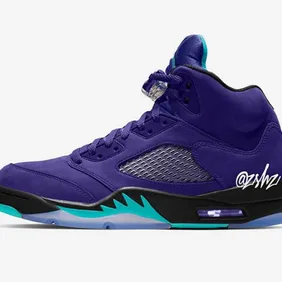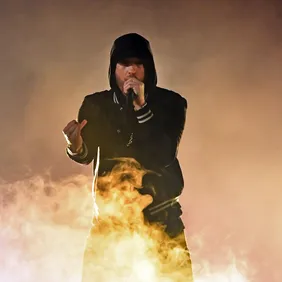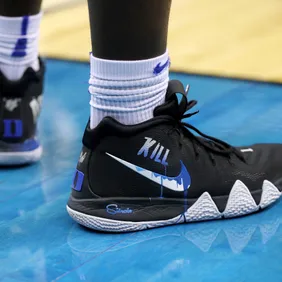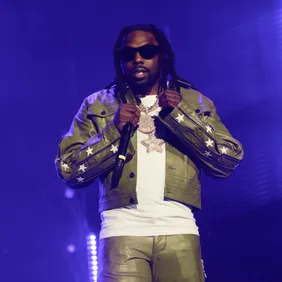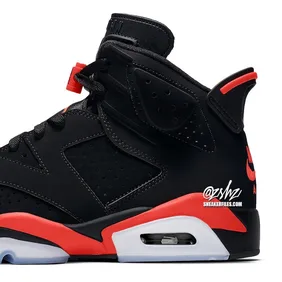R&B is not dead, but the past ten years have pointed toward such a conclusion. In 2010, top crooners began resorting to pop tracks for chart-topping success and Drake was, well, singing. While quality was certainly upheld at various checkpoints, the lines were undeniably blurred. There was no longer some clear and comprehensive criteria to classify the genre within the mainstream; but, when the current class of torchbearers began to assume their roles in the last half of this decade, it’s easy to make out what was happening all along.
Hindsight being 20/20, we see now that history is repeating itself. The collective resurgence of R&B in an otherwise lacking landscape finds a parallel in the rise of neo-soul around the turn of the millennium. Just as audiences then were turned on to the Erykah Badus, Maxwells, and Jill Scotts , today's listeners are presented with a once-underground class of talent with no interest in conceding to traditional constructs set by their predecessors. It’s less of a coup of the tenets that once buoyed an entire class of creators, but is rather a changing of the guard, making way for a new era of candor and earnest delivery that will likely cue the next’s generation’s cleaning days to come: the age-old sign of a classic.
This year, especially, proved to be as much of a pinnacle for such creations as it was for the discussion that surrounded them. Debates on the showmanship, fan interaction, and the (still uncrowned) King of R&B have underscored the creeping mainstream dominance of R&B’s new direction. So much so, in fact, that it seemed we talked less about the music and more about the artist’s actions. At the root of it all were some of the best outputs that this newest generation of artists have created in some time. In this year’s rotation of R&B albums, we found breakout bodies of work from brewing rookies and undeniable opuses from long-established vets. Similar to the entrance of the first wave of neo-soul, 2019’s most memorable R&B creations latched onto a strong commonality: nostalgia. Whether taking cues from both Motown’s heroes, New Jack Swing soldiers, or Sidekick-era luminaries, the music found a way to transport listeners to times gone by, introducing us to a successful trend of retro-contemporary soundscapes. The year’s outputs prove that we are quickly moving past some SoundCloud phenomenon and are settling into a definitive era of R&B’s next paradigm. Here are the top efforts that stood out from the exhaustively impressive pack.
Additional contributions to this list come from:
15. Jacquees - King Of R&B
By the end of the hour-long tracklisting of Jacquees’ sophomore studio album, the 25-year-old doesn’t necessarily end up making a case for any coronation of sorts. But, what he does tremendously well extends the foundation laid by past incumbents.
In the pool of young R&B-centric talent, Jacquees has proven to be one of the few with clear intentions on upholding the values set forth during the genre’s more definitive eras. On King Of R&B, this quality shines through as he achieves a balance that vacillates between boyish tease and earnest lover. The blending of genres isn’t a concern for Jacquees. Instead, he focuses his energy on the contemporary presentation of R&B’s hallmarks. He upholds the classic admission of guilt on “Cross The Line,” while baring vulnerability and regret on “Warning.” He’s attentive in the sheets on “Round II” and even fills in the blank of a fitting duet with the Summer Walker-assisted “Superstar.”
“I understand who done came and who done did that and that and that, but now it’s my turn,” he famously declared when initially crowning himself king. Now, nearly a year later, the brash crooner proves that his conclusion did not come without its due diligence. Jacquees is an undeniable student of the game. He’s mastered mirroring and refining the techniques crafted by the genre’s most notable teachers and makes this especially clear on King Of R&B.
14. Mahalia - Love & Compromise
Mahalia’s debut album was eight years in the making. What this impressively translates to is the fact that the project’s sound— in comparison to that of her contemporaries— is not birthed in response to an evolving landscape, but is rather the result of an isolated decade where she perfected of her craft. Love & Compromise, then, is refined and assured output that proved to be one of the most cohesive albums of the year.
On Love & Compromise, Mahalia crafts a thoughtful journey that considers its title at each stop along the way. The first is greeted with Eartha Kitt’s voice purring of her philosophy on the folly of compromising for a man. This sentiment practically shrouds the remainder of the project with the subject matter largely pertaining to an eventual choice to walk away or to avoid the relationship altogether. “Hide Out” is a reflection of betrayal as the breakout “I Wish I Missed My Ex” ponders on the satisfaction of moving on. The poignant “I Know What You Did” duet with Ella Mai hones in on an ex-lover’s scheming and the Beenie Man-sampling “Simmer” finds the 21-year-old Brit brushing the possibility of any serious companionship away.
Armed with an apparent affinity for a multitude of influences, Mahalia effectively pieces together an album that seamlessly bobs and weaves between various sounds, rhythms, and even periods in time. She draws from '90s slow jams on “He’s Mine,” digs into Gospel fundamentals on the project closer “Square One,” and calls to her Caribbean roots on the forenamed “Simmer” alongside Nigerian star Burna Boy. Pairing a competency for leveraging such variety with smart and inclusive songwriting, Mahalia unquestionably constructs something for everyone on Love & Compromise.
13. Blood Orange - Angel's Pulse
One could make the argument that no one is putting out albums as sonically and thematically cohesive as Devonte Hynes right now. Hynes has stood out for the masterful degree of control that he maintains over his art and it only becomes more apparent with each release. His ability to craft such a complete statement is largely due to the fact that he has a hand in every little part of it - he writes, he sings and he’s credited for playing ten different instruments on Angel’s Pulse alone.
Considering Angel’s Pulse was presented as a mixtape – rather than Blood Orange’s usual album format - one might have expected Hynes to abandon his fierce dedication to cohesion. However, it still plays like an extended dream. Anyone accustomed to a Blood Orange project could understand his sonic collages as the products of a single mind. His ingenious use of features allows him to cover as much ground as possible. He often calls on undervalued female vocalists and tests them in new contexts. Tinashe and Justine Skye both shine in their recurring appearances on Angel’s Pulse. Hynes also orchestrates one of his wondrously odd collaborations by placing Venezuelan artist, Arca, and BROCKHAMPTON’s Joba on “Take It Back”. Everything makes sense under Hynes’ curation and Angel’s Pulse is another example of his ambitious music feeling effortless.
- Noah
12. H.E.R. - I Used To Know H.E.R.
This year, H.E.R. made a surprise drop when she pieced together two previously-released EPs to craft a full-length album. On the comprehensive I Used To Know H.E.R. project, the enigmatic songstress combines the Prelude and Part 2 EPs of last year, adding a handful of new tracks and even lengthening a few interludes to fully craft the body of work. Tying it all together is a subtle update in the project’s artwork in which a previously blurry polaroid is now clear with an image of Gabi Wilson leaning over to teach a younger version of herself how to play the guitar.
I Used to Know H.E.R. proves to be H.E.R.’s most important project to date. It arrives at a peak of popularity and mainstream success for the once-anonymous siren. It signals the culmination of Wilson’s evolution. Whereas H.E.R. of 2015 gifted us with a faceless proponent for broad-spectrum tracks on love and relationships, the most recent iteration of the singer offers fuller perspective into the life of a twenty-something navigating maturity (“21”), money (“Racks”), and mental health (“I’m Not OK”).
11. Daniel Caesar - Case Study 01
“It’s all just a big experiment,” wrote Daniel Caesar as he introduced fans to his surprise CASE STUDY 01 album in June.
A lot had changed between then and the time that he released 2017’s debut Freudian. Take immediate cultural success, three Grammy nominations, and way more attention than you’ve ever had before, and the same would be true for anyone.
While still leaning into philosophical influences, the Canadian crooner’s CASE STUDY 01 opens listeners up to a number of subjects bombarding his psyche beyond the sweet nothings of love that brought him to prominence. On CASE STUDY 01, Daniel Caesar’s bubble expands past the one trope, engulfing ideas of faith and mortality. But, to the trained ear, we’ve been here before.
Early patrons of Caesar’s catalog will recognize CASE STUDY 01 as a deeper exploration of the themes first laid out on 2015’s Pilgrim’s Paradise. Whereas Daniel may have found success as a proponent for love ballads, CASE STUDY 01 finds its magic in the return to form that it presents for Caesar. When you pair such ideas with the inevitable change that Caesar has undergone since then, the result is a listing of tracks that still trace remnants of romance, but also intertwine the reality of fame’s aide in metamorphosis: “Used to steal all my groceries and now I get to the racks/Used to be ugly, but now I hit from the back,” (“Frontal Lobe Muzik”).
This promotion is also reflected in the number of extra names present on the effort. Caesar avoids the bloat, keeping a smart balance of day one collaborators such as Sean Leon while flexing his muscle with the recruitment of Brandy, Pharrell Williams, and John Mayer. It all seems to add up to a deviation from the blueprint laid out by Freudian, but CASE STUDY 01 is the necessary pit stop that continues what Pilgrim’s Paradise began.
10. Raphael Saadiq - Jimmy Lee
The past few years have seen Raphael Saadiq take on roles that task the 53-year-old hitmaker with manning his position from behind-the-scenes to play his hand in some of our most significant cultural moments. Since 2016, he has served as the composer of HBO’s Insecure series and is credited as executive producer of Solange’s seminal A Seat At The Table.
However, with the arrival of his Jimmy Lee studio effort, Saadiq rightfully adjusts the spotlight onto his own narrative, pulling the curtain back on deeply personal tales of addiction and eventual loss. Named after Saadiq’s late older brother who died of an overdose, Jimmy Lee finds Ray navigating the years of self-discovery that have followed since 2012's Stone Rollin’. Cuts such as “Riker’s Island” capture the overarching theme of the effort while contrasted with a new perspective on the autobiographical “My Walk.”
On Jimmy Lee, Saadiq subtly delivers on an emboldened reminder of his dominance in adhering to the genre in question. He attaches himself to the winning formula that he’s always known, rarely departing from the sound that he has long established. In the midst of newer voices reworking old formulas, Jimmy Lee is a quieted example of just how it’s done.
9. Steve Lacy - Apollo XXI
In 2017, Steve Lacy took the music industry by storm. Well, to be fair, he foreshadowed his takeover in 2016 when he joined The Internet and offered a crucial hand to the creation of the group’s career-shifting record, Ego Death. His contributions on there became discernable as he started lending his production chops to artists like Isaiah Rashad, J. Cole and Kendrick Lamar. Blunted drums, sanguine guitar melodies and reverberant bass marked the signature sound of Steve Lacy. Headlines like “Steve Lacy Produced That Hot Kendrick Lamar Track Using Only His iPhone” led to him being viewed as the wunderkind to grab for your next album – the future.
Steve Lacy’s Demo (2017) concentrated his magic in a single place, opposed to it being sprinkled across the projects of others. It housed the archetype of his sound, but managed to show dazzling versatility in just fourteen minutes. His debut studio album, Apollo XXI, proved that, with 43 minutes, Lacy only has more room to explore and impress. He’s willing to stretch his vocals to their limits to embody more personas. On “Playground,” Lacy’s the tour guide of a colourful acid trip. On “Lay Me Down,” he gives the breathy moans of an R&B sex god. He reaches back into various eras of various genres but always sculpts something that is unmistakably his own.
- Noah
8. Tory Lanez - Chixtape 5
The immersive experience of Tory Lanez’s fifth Chixtape project began as soon as the Canadian placed a forever-young Ashanti front-and-center on his album artwork. The music itself would deliver on its magic in the flipping of the running backlash against Tory’s love for samples by deliberately extracting from the early 2000s cuts that color his inspiration.
Wholly following through on his intentions, Tory Lanez's creation of Chixtape 5 deserves immediate praise for its presentation as a new prototype. With each new flip, a familiar voice is attached. T-Pain is present on the “Jerry Sprunger,” which samples his “I’m Sprung” hit,” Uncle Snoop shows up for a verse on “Beauty in The Benz” which flips his Pharrell-assisted “Beautiful.” Cover star Ashanti doubles up with an appearance on “Foolish” remake “A Fool’s Tale” and Chris Brown once more gets to “Take U Down” on “The Take.”
In an age in which nostalgia reigns supreme, Lanez perfects the trend that he, himself, has helped to craft in the last half of the decade. He captures the essence of the golden age that inspired his own career. Its a proper homage in an increasingly post-genre landscape, and it makes for Lanez’s most ambitious outing to date.
7. Gallant - Sweet Insomnia
Gallant has been slowly but surely been building up his reputation as an important r’n’b voice of the new generation. The Maryland singer is filling a gap left from 2000s-era r’n’b, picking up the mantle and adopting it to fit our 2019 (soon to be 2020) landscape. His voice is silky sweet, while his music explores the boundaries of r’n’b, pushing into alternative rock territory yet somehow always bringing it back home to rhythm and blues. His sophomore studio album, Sweet Insomnia, showcases these aspects of his artistry in a succinct 13 tracks (and it’s worth noting three of those tracks are too-short interludes), with the rock-infused title track as the album’s centerpiece.
The wide, plucky guitar notes of “Sweet Insomnia” (featuring 6lack) become somewhat of a guiding theme across the warm, cushy tones of the album, complemented by Gallant’s vocal dexterity; his voice the blanket atop it all. “Hurt” opens with an acoustic guitar melody that wouldn’t sound out of place on a Sufjan Stevens song before it gets buried in lush, modern production. Early stand-out “Sharpest Edges” brings the guitar element on less of a folk-level and more of a rock-level. As we inch closer to the album’s end with “Sleep On It” brings back the acoustic guitar which pervades the length of the song, and equally, showcases how his lyrics often encapsulate perfectly the pull-and-tug of a relationship: “it'd be a shame to waste / Perfect night like this / Saying things that we don't mean, yeah I know it's hurting you / Shit, it hurts me too / We're too stubborn to admit it,” he croons, littering the song with bursts of his honey’d falsetto.
- Rose
6. Lucky Daye - Painted
Lucky Daye’s debut album Painted arrived to listeners in pieces. As the crooner shifted comfortably into place, he gradually treated new ears to bite-sized introductions found in his I and II EPs. Painted would arrive with a conclusive third part, binding it all together to make for one of the year's most textured and enveloping offerings across all genres.
Daye's influence is deeply rooted in mainstays of eras gone by— a facet that can be linked back to forbidden listens of Prince and The Gap Band while being raised in a deeply religious Christian home that forbade outside entertainment. A self-proclaimed "infinite soul,” Lucky’s Painted is an unequivocally timeless creation.
Project opener and lead single “Roll Some Mo” acts as the basis for a contemporary trip down memory lane while Lucky and producer Dernst “D’Mile” Emile II lay the framework of an effort that takes its cues from all the golden tenets of R&B and Soul’s greatest sounds. “Extra” and “Late Night” tune into dance-ready funk influences while “Misunderstood” and “Love You Too Much” display an appreciation and intelligent interpretation of modern Jazz and Blues foundations. All the while, Lucky Daye’s intuitive songwriting fasten it all together to underscore an affinity for nostalgia while showcasing a nuanced comprehension of music’s current trends. On Painted, Lucky Daye is the wondrous sum of all his parts and we’re all better for it.
5. Snoh Aalegra - Ugh, Those Feels Again
The amount of emotion that finds its way to the surface of Snoh Allegra’s ugh, those feels again is palpable. It places a stronghold on the project and produces the Swedish-born singer’s most stirring work. Picking up where 2017’s FEELS left off, ugh finds Snoh Aalegra post-breakup as she navigates a smoldering mix of emotion that explores heartbreak, dating, and protection of self.
Executive produced by NO I.D., the effort finds its bones in larger-than-life production as Snoh makes an effort to relay her reluctance in indulging in the wave of feelings that come attached to love— or lack thereof. Such reluctance is present with the apprehension of moving on and in the regret of a failed relationship. A tug between these two factors artfully characterizes ugh, those feels again. As quickly as she gratifies in the highs of Side A selects such as “Find Someone Like You” and “Woah,” she retreats to pensive despondence on Side B representatives like “Charleville 9200, Pt. II” and “Be Careful.”
The ease at which she flips the script paints an honest picture of the realities of navigating heartbreak and finds its value in working out the kinks in love.
4. SiR - Chasing Summer
For TDE’s resident soul singer SiR, loneliness is always on tap. His latest project, Chasing Summer, finds him gasping to keep his head above water at times, extracting prickly metaphors and excuses for behavior from the reservoirs of his ego. His jazzy sweetness is frequently chased with these more self-serving tendencies, and he gulps down concocted fancies with a fervor on tracks such as “Hair Down” and “John Redcorn.” The irony is that Chasing Summer’s sunny complexion does little to stand in the way of SiR’s vaporous ruminations about romance. A pilot’s voice-over serves to guide the listener on what is presumed to be a journey into uncharted lands. But the Inglewood native instead chooses to content himself with more localized stomping grounds as he runs through the gamut of emotions, from passion to pain to poison. Temporary love interests notwithstanding, SiR manages to stay firmly in his element, dictating his heart’s desires at will over shimmering instrumentation.
- Luke
3. Solange - When I Get Home
The title of Solange’s When I Get Home suggests a return to a place of familiarity, where the process of psychological souvenirs firing between synapses is more cathartic than anything else. This meditative quality is impossible to ignore out of the gate, with “Things I Imagined” purring into place through a repetition that massages the cortex. Structure gives way to mantra as the album begins to blossom into an ambient and unshackled pop piece. It’s the opening salvo for an exceptional sonic experience in which most songs barely flirt with the two-minute mark. A labyrinth of wafting sights and sounds that toy with the senses lend themselves to this ambiance. Meanwhile, the tendrils of Houston mythology wrap their way around Solange’s retreat into this dreamy domain, refusing to let go but allowing her to breath new life into the atmosphere. Though the album is not bereft of guests, those whose voices peer out of the mist serve a decidedly less ancillary purpose than is typically expected of big budget roles. When baby Carti pops up amidst the black solidarity of “Almeda,” it feels like a natural progression rather than a commercial-minded addendum. If A Seat At The Table is Solange’s all-consuming magnum opus, then When I Get Home is a soul-funk salve, a freeform mental map where motion is the antidote for weariness.
- Luke
2. Summer Walker - Over It
Summer Walker had an amazing year. The singer officially went from relatively unknown to mainstream moniker, thanks to an impressive debut album, Over It, executive produced by her boyfriend London on Da Track. The album pulled on those nostalgia-ridden heartstrings, not only with production elements that recalled an era bygone, but with the artwork too. The pink-heavy cover shows Summer with her du-rag in place, deep pink eyeshadow plastered on her eyelids and an exaggerated set of lashes, mid-phone conversation; a baby pink phone with a chord. While the phone is not fully visible, it’s quite clear that this is a rotary phone. It could be the scene of a 2000s-era r’n’b music video.
The album continues the trend with a few carefully curated samples, namely, Usher’s “You Make Me Wanna” on the early fan favorite (and Usher-featuring) “Come Thru” as well as Destiny’s Child’s “Say My Name” on the Bryson Tiller-featured “Playing Games.” Summer doesn’t rely on these influences like a crutch though, rather she invokes them to uplift her own sound. It’s a sound that feels effortless, much in the same way our Instagram feeds are filled with “effortless” poses and postures-- it’s all surface level. Despite the calmness of the music, Summer herself is still a bit messy, still a bit frantic, still figuring out who she is and where she belongs, like many millenials are. It’s these emotions and thoughts that pervade her lyrics. The mix of Summer’s raw writing with London’s thoughtful backdrop make the album an enthralling and captivating listen from start to finish.
- Rose
1. Ari Lennox - Shea Butter Baby
“Alright, all the ni—as in here, leave, please, on the count of three because I need to talk to my bitches,” instructs a recurring voiceover at the tail end of Shea Butter Baby opener “Chicago Boy.”
On her debut album, Ari Lennox is both the patient and the therapist. Throughout all 12 selections on Shea Butter Baby, Dreamville’s resident siren carefully walks the line. The body of work— three years in the making— is a curative collection of Lennox’s diary entries on display for all to see. It’s an anthropologic experiment, giving way to brash assertions of sexuality on cuts such as “Up Late” and “BMO,” celebrating the playful pride of autonomy on “New Apartment,” and basking in the brooding heartbreak depicted on “I Been.”
Once again, like her peers, Lennox is reaching back to some form of an archive to extract inspiration, most closely resembling the voice of neo-soul pioneers. In Lennox’s case, however, it’s less of a contemporary update on the subgenre and more of a direct continuation of the form. She offers no novelty in most of the style's tenets. The lyricism is still as candid as ever, piercing emotion is in full abundance, and meticulously selected production— anchored by jazz, blues and soul roots— serves to complement Ari’s airy and poignant vocals.
What’s more is that she practically does it solo, making little room for no more than two voices from JID and J. Cole. Thereafter, the shop is closed off to strangers as Lennox keeps the communal space of Shea Butter Baby sacred. It is here that she bares it all and leaves the narrative open-ended enough for listeners to fill in their blanks in what inexplicably mirrors a reciprocative exchange.
SOUND OFF IN THE COMMENTS.


